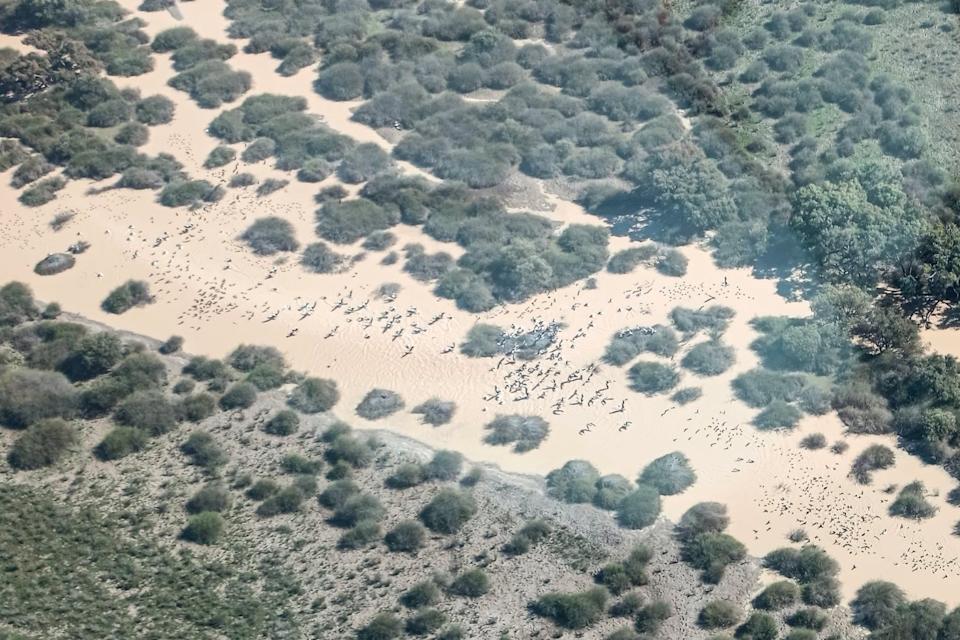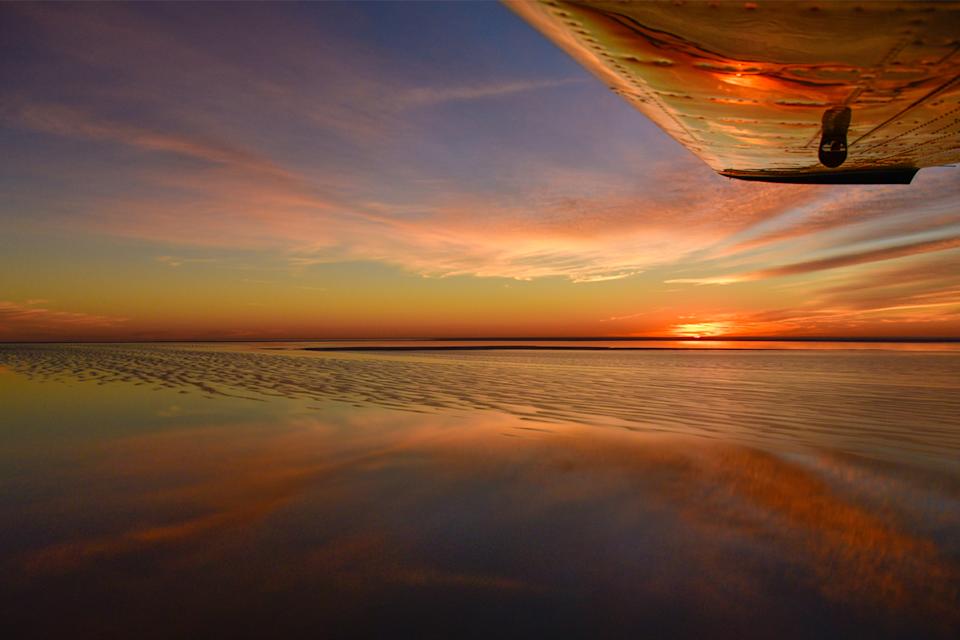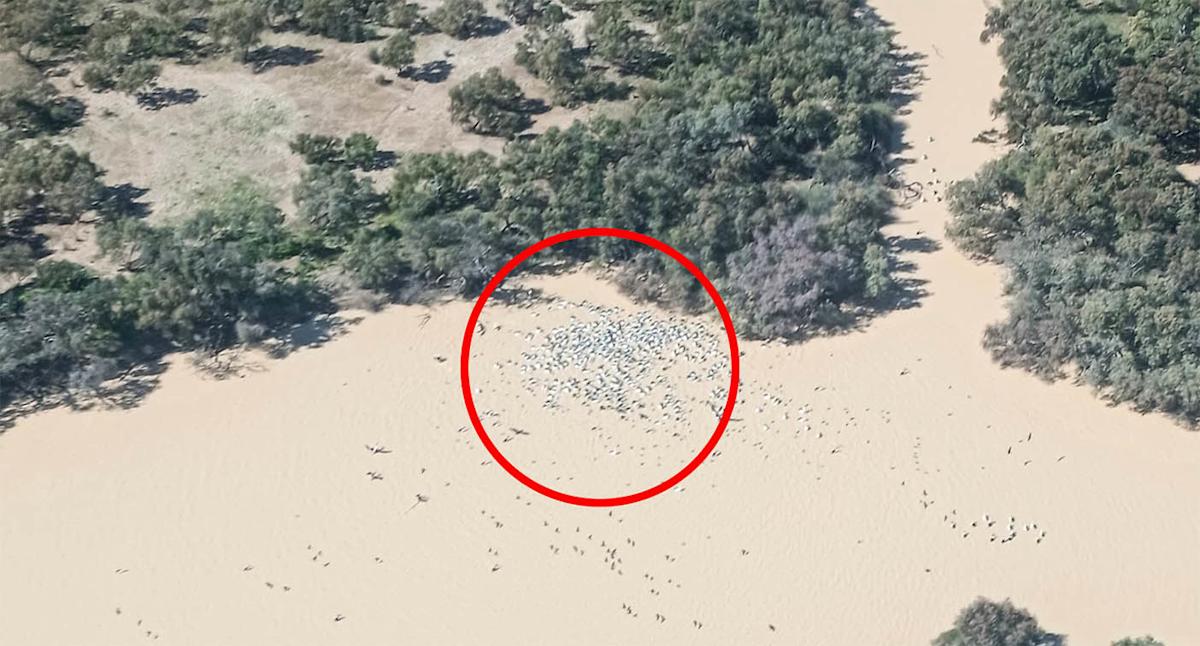Australia’s outback is renowned worldwide for its vast desert landscapes. But every once in a while, when the conditions are right, 9,500 square kilometers of the outback turn into an inland sea.
For business owners like Phil van Wegen, the filling of South Australia’s Kati Thanda-Lake Eyre is an exciting time. “This will be the most [water] it’s had in 50 years,” he told Yahoo News. With it comes an explosion of life in the form of fish, birds, and even tourists.
Arid Air pilot Phil has had a front-row seat as thousands of gigalitres of water made its way into the region from western Queensland, after a 2,000-kilometre band of rain swept across the country earlier this year. The downpour sent parts of the outback underwater, with residents cut off for weeks.
The salt lake is Australia’s lowest point at 15.2 metres below sea level. The lake has only filled to capacity three times in the past 160 years.

Pelicans, ducks and black swans have been sighted from the air. Source: Arid Air
With daily flights over the usually dry salt pan, Phil said it’s been “exciting” watching the land evolve.
“There is plenty happening,” he said.
Phil and his wife have owned Arid Air since 2018, one of the several companies offering scenic flights around the lake to tourists from the small outback town of Marree in South Australia.
“Over the whole season, we’ve progressively watched it fill to capacity,” he said. “It’s interesting to watch the lake evolve and the different colours and patterns that emerge.
Now that waters have significantly filled the basin, wildlife is beginning to erupt, with bony bream, hardyhead, shrimp, catfish and perch carried in by the waters. As their populations explode, breeding birds fly from as far away as China and Japan to enjoy the feeding frenzy along with natives like pelicans, robins, cockatiels, ducks and ibis.
“There is bird life starting to turn up,” Phil said. “Pelicans are starting to move down, as well as ducks and black swans.”
Phil says that Lake Eyre is an “important breeding ground” for birdlife.
“They are known to come down in big numbers,” he said. “It’s a good, safe breeding ground, and if you get a lot of water, there is food for them. I guess it’s a good sanctuary.”

Kati Thanda-Lake Eyre, usually barren, is undergoing an incredible transformation. Source: Outback Spirit
How long will Kati Thanda-Lake Eyre remain full?
But how long will the remarkable sight be visible? For Phil, it’s hard to say.
“I think we’ll see water right through summer and into early next year,” he said. “But it depends on what we get next year.”
The desert’s hot summers mean there will be “a lot of evaporation”. But back-to-back wet seasons could mean the water sticks around for longer. Phil urges all Aussies who want to witness the remarkable scene to get in quick.
With the natural phenomenon taking place to this extent just once every 50 years, tourists have been flooding the region to witness the extraordinary spectacle.
“People are coming from all over Australia, as well as a few international tourists starting to turn up,” Phil said. “It’s a huge boom for the whole region.”
Seeing the vast land from the air “blows everyone away”, Phil said, adding that even for him, it’s “always pretty spectacular”.
Despite the influx of water, many parts of South Australia and Victoria are continuing to experience drought. For months, swathes of South Australia’s agricultural heartlands have been battling with the driest conditions in decades, with some of the lowest rainfall on record.
Last month, a convoy of 90 trucks transported more than 6,000 bales of hay across the outback.
Do you have a story tip? Email: newsroomau@yahoonews.com.
You can also follow us on Facebook, Instagram, TikTok, Twitter and YouTube.

